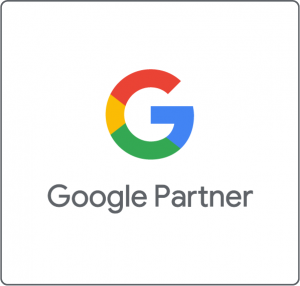Here’ are 5 ways you can prepare in 2022 for the programmatic shift
With all screens now seemingly bought programmatically, and with the impending cookie-apocalypse (finally/maybe on the horizon next year), 2022 will be a year like no other for programmatic. Despite some obvious challenges, the opportunities for advertising sophistication using dynamic data have never been more prevalent and exciting.
If you’re looking to change your strategy to incorporate the key trends in programmatic in 2022, here are five things to plan for:

1.) Explore outcome based measurement
It goes against much that digital marketing (and especially programmatic) was built on, but proxy variables such as clicks will become less relevant. In the omni-channel, multi-device era, campaigns are using more goal-oriented metrics to measure success. Retailers will look at footfall and e-commerce sales, or use dynamic data sources (things like geo-specific market share) to understand what is delivering results. Agencies and advertisers will then be able to use these insights on audience and campaigns to optimize in the instant to achieve more of what matters, whether that’s growing, conquesting or defending.
2.) Make a privacy-first promise to your customers
With the cookie being diminished in 2023, marketers need to use 2022 to explore privacy first technology and partners. Your data strategy is intertwined with your brand trust. Savvy marketers know that it’s important to manage customer data in a trustworthy way. That goes far beyond first-party customer data. Marketing leaders who aspire to build trusted brands are using the way they collect, manage and activate data as a strategic priority, for competitive advantage.
With advertising more dependent on me-too activation technologies and with decisions devolved to machines, marketers and consumers need to know they can trust the underlying data used by AI models. More than ever, competitive advantage will be found in data, audience profiling and planning.
3.) Use cross-device context
While it may be driven by legislation, contextual advertising will continue to be used to marry where and how people are consuming media. Context will continue to be a valuable tool across every device from mobile, to TV and out-of-home (OOH) as marketers prepare for the cookieless world. More specifically, 2022 will see the emergence of richer, data-driven contextual audience solutions.
Using vast data sets that are privacy first without identifiers, algorithms can build rich and targetable contextual opportunities. Context can go way beyond content, enriching targeting with additional data sources, such as weather and location, to deliver effective audiences without the need for personal identifiers on any screen. Combining this with dynamic creative optimization, can deliver messaging tailored to the user mindset moment, creating personalization, but not as we know it.
4.) Get connected television on plan
Connected television (CTV) is one of digital advertising’s fastest-growing channels. It benefited hugely from pandemic trends and continues to be prevalent as linear TV decreases in importance with cord-cutting accelerating, and more programmatic CTV inventory becoming available. It opens up new opportunities for advertisers to reach consumers across different screens, while using the advanced audience-targeting solutions you’d expect from programmatic.
It’s a fragmented market, and not without challenges but it uniquely gives marketers the ability to serve video ad inventory in TV-like environments, without the expense and complexities of linear TV buying. It’s especially good at reaching younger audiences and those who have cut the cord to traditional television, making it a valuable channel for advertisers looking to enter the space.
5.) Prioritize data for programmatic digital out-of-home
Last year felt like a real coming of age for programmatic digital out-of-home (DOOH). With the challenges of the pandemic looming large, marketers were able to use data-driven decisioning to buy OOH inventory where and when their audiences were. It also meant being agile with locations where audiences may not have been due to lack of commuting throughout lockdowns. This allowed for greater return on reach which was essential especially for emerging challenger brands we are exploring DOOH for the first time.
Using insight from mobile network providers and map-centric modelling, you can analyze OOH screens’ score against specific audiences and spatial data. This typically provides more stable results, as it prevents the impact of outliers and prioritizes locations with a higher number of users seen in their proximity. Dayparting systems can provide insight on the audience by day and hour of the week, which you can then analyze at a screen-site level. By using advanced geo-spatial planning activation, in conjunction with traditional hero sites, it’s possible to dominate the OOH space at the best time for your brand.
With more screens being made available for programmatic activation, 2022 will see an increase in DOOH being used at real-world events and moments of impact to connect and engage audiences. Programmatic DOOH is becoming the glue on multi-channel campaigns, combining the benefits of a one-to-many mass medium with the precision targeting of digital.
Summary
As 2022 moves on, programmatic will keep growing. There’s a wealth of undiscovered programmatic potential for most brands to explore. The key is the right data, and a pioneering mindset of what you can achieve.



